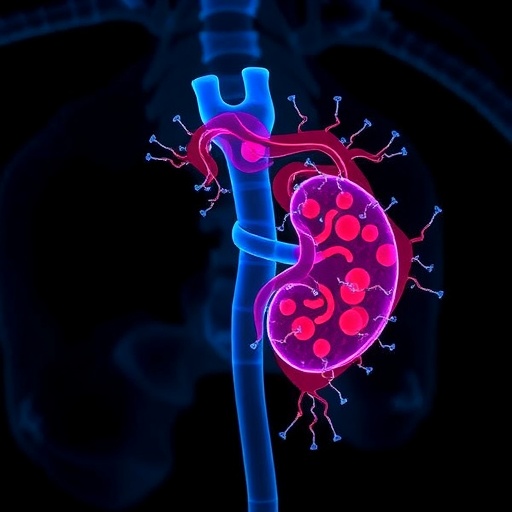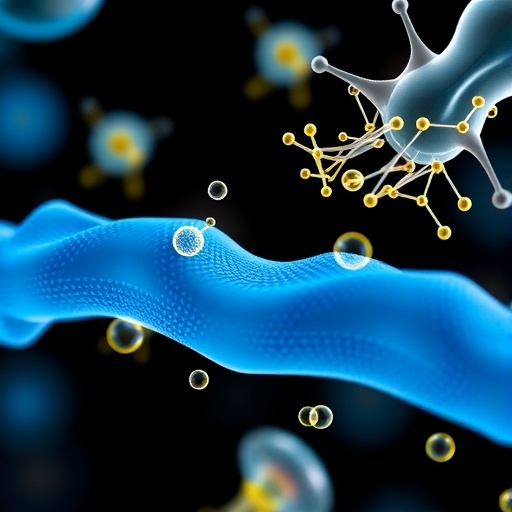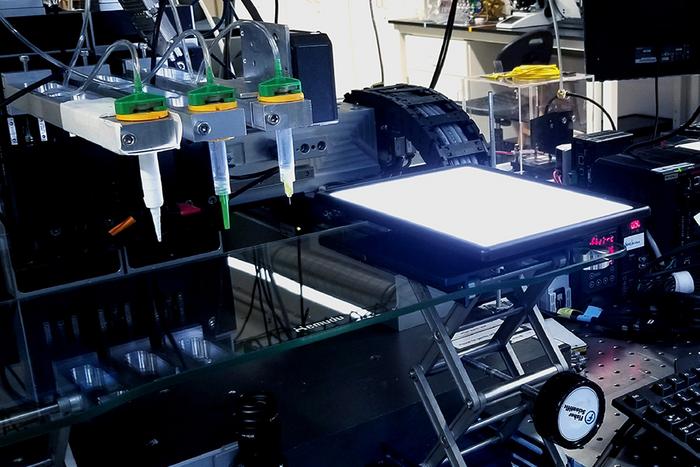
A groundbreaking study has emerged from the cutting edge of medical research, unveiling a novel biomarker with the potential to revolutionize the diagnosis and management of sepsis-associated acute kidney injury (SA-AKI). Scientists led by Li, Tang, and Gu have employed the innovative technique of single urinary extracellular vesicle (uEV) proteomics to identify the complement receptor CD35 as a promising indicator of kidney damage triggered by sepsis. This discovery, detailed in their recent publication in Nature Communications, could pave the way for earlier detection and improved prognosis in patients suffering from this life-threatening complication.
Sepsis-associated acute kidney injury remains a formidable clinical challenge, frequently complicating severe systemic infections and contributing significantly to patient morbidity and mortality worldwide. The pathophysiology of SA-AKI is complex and multifactorial, involving inflammatory cascades, microvascular dysfunction, and immune responses that culminate in renal impairment. Conventional biomarkers such as serum creatinine and urine output are limited by their delayed responsiveness and insufficient specificity, underscoring the urgent need for more sensitive and early markers of kidney injury in septic patients.
What sets this study apart is its use of single urinary extracellular vesicle proteomics, a sophisticated approach that delves into the proteomic composition of vesicles shed into the urine by renal cells. These extracellular vesicles serve as miniature information packets, reflecting the molecular state of their parent cells. By isolating and analyzing individual vesicles rather than bulk urine samples, the researchers achieved an unprecedented resolution in detecting subtle changes in protein expression patterns that accompany kidney injury.
.adsslot_Lh5TSDmel4{width:728px !important;height:90px !important;}
@media(max-width:1199px){ .adsslot_Lh5TSDmel4{width:468px !important;height:60px !important;}
}
@media(max-width:767px){ .adsslot_Lh5TSDmel4{width:320px !important;height:50px !important;}
}
ADVERTISEMENT
Through meticulous proteomic profiling, the team identified complement receptor CD35 as significantly elevated in the urinary extracellular vesicles of patients diagnosed with SA-AKI. CD35, also known as complement receptor 1 (CR1), plays a critical role in the immune system by regulating complement activation—a key component of innate immunity and inflammation. Its heightened presence in uEVs suggests an intimate link between complement-mediated immune pathways and the pathogenesis of septic kidney injury, providing a mechanistic insight into disease progression.
The implications of these findings are profound. Detecting CD35 in urinary extracellular vesicles could enable clinicians to diagnose SA-AKI at an earlier stage, potentially before irreversible renal damage occurs. Moreover, the specificity of CD35 to complement activation pathways offers opportunities to tailor therapeutics that modulate immune responses, potentially mitigating kidney injury in septic patients and improving survival rates.
This study also illustrates the transformative power of leveraging extracellular vesicles as non-invasive biomarkers. Unlike tissue biopsies, which are invasive and carry substantial risks, urinary vesicle analysis harnesses easily obtainable samples, facilitating repeated monitoring and dynamic assessment of disease states. The advancement of single-vesicle proteomics further enhances analytical precision, opening new horizons in personalized medicine for complex conditions such as sepsis.
The research team applied rigorous validation protocols, comparing uEV CD35 levels in diverse patient cohorts and correlating these measurements with established clinical parameters and outcomes. Such comprehensive analyses underscore the robustness of CD35 as a biomarker and set the stage for larger-scale clinical trials aimed at standardizing its use in critical care settings worldwide.
Beyond diagnostic applications, the study also sheds light on the molecular pathology of SA-AKI. The complement system’s double-edged role—essential for pathogen clearance yet potentially injurious when dysregulated—becomes vividly apparent. CD35’s association with urinary vesicles implies that renal cells actively engage in complement regulation, and perturbations in this process may signify early immunological distress within the kidney microenvironment.
From a technological standpoint, the deployment of next-generation mass spectrometry techniques in dissecting single urinary extracellular vesicles represents a formidable technical achievement. This allows not only for detection of protein abundance but also offers the potential to explore post-translational modifications, protein interactions, and vesicle heterogeneity that could further refine biomarker discovery and precision diagnostics.
The potential clinical impact of this discovery can hardly be overstated. Acute kidney injury occurs in up to 50% of septic patients in intensive care units, often worsening prognosis and complicating treatment algorithms. A biomarker that is both specific and accessible could transform critical care nephrology, enabling timing of interventions that preserve renal function and inform prognostic stratification, thus optimizing resource allocation and improving patient outcomes.
Moreover, the findings invite exploration into therapeutic targeting of the complement pathway, which has garnered attention in various inflammatory diseases but remains underexplored in sepsis-induced nephropathy. If CD35 modulation can be harnessed for therapeutic benefit, it could inaugurate novel drug development pathways grounded in molecular pathology illuminated by proteomic insights.
The study’s integrative approach highlights the importance of interdisciplinary collaboration among nephrologists, immunologists, proteomic scientists, and critical care specialists. This synthesis of expertise facilitates translation of complex molecular discoveries into tangible clinical applications, illustrating a model for future biomedical breakthroughs.
Looking forward, this research sets a precedent for expanding the landscape of urinary extracellular vesicle biomarkers in other acute and chronic kidney diseases. The identification of CD35 may be merely the first of many revelations enabled by high-resolution vesicle proteomics, promising a new era of non-invasive, precision nephrology where disease can be mapped and intercepted at the molecular level.
In summary, the identification of complement receptor CD35 in single urinary extracellular vesicles heralds a significant advance in the quest for early, specific biomarkers of sepsis-associated acute kidney injury. By marrying cutting-edge proteomics with clinical insight, Li, Tang, Gu, and colleagues offer renewed hope for vulnerable patient populations and invigorate the field’s ongoing pursuit of molecular diagnostics and targeted therapeutics.
As the scientific and medical communities continue to unravel the complex interplay between immunity and renal pathology in sepsis, the integration of uEV proteomics into routine clinical practice may soon become a reality. Such innovation not only promises to improve survival rates but also exemplifies the power of precision medicine approaches that decode disease signals from the tiniest particles within our bodily fluids.
This paradigm shift toward exploiting extracellular vesicles as diagnostic gold mines could soon extend beyond nephrology, influencing fields ranging from oncology to neurology. The approach championed by this study underscores the vast, largely untapped potential of vesicle-based biomarkers to revolutionize how we detect, monitor, and treat human disease.
Subject of Research: Identification of complement receptor CD35 as a biomarker for sepsis-associated acute kidney injury using single urinary extracellular vesicle proteomics.
Article Title: Single urinary extracellular vesicle proteomics identifies complement receptor CD35 as a biomarker for sepsis-associated acute kidney injury.
Article References:
Li, N., Tang, TT., Gu, M. et al. Single urinary extracellular vesicle proteomics identifies complement receptor CD35 as a biomarker for sepsis-associated acute kidney injury. Nat Commun 16, 6960 (2025). https://doi.org/10.1038/s41467-025-62229-4
Image Credits: AI Generated
Tags: CD35 biomarker for kidney damageclinical challenge of SA-AKIcomplement receptor in sepsisearly detection of kidney injuryinflammatory response in kidney injuryinnovative techniques in medical researchlimitations of traditional kidney injury biomarkerspatient morbidity in sepsisprognostic indicators for sepsisrenal impairment in sepsissepsis-associated acute kidney injuryUrinary extracellular vesicle proteomics






